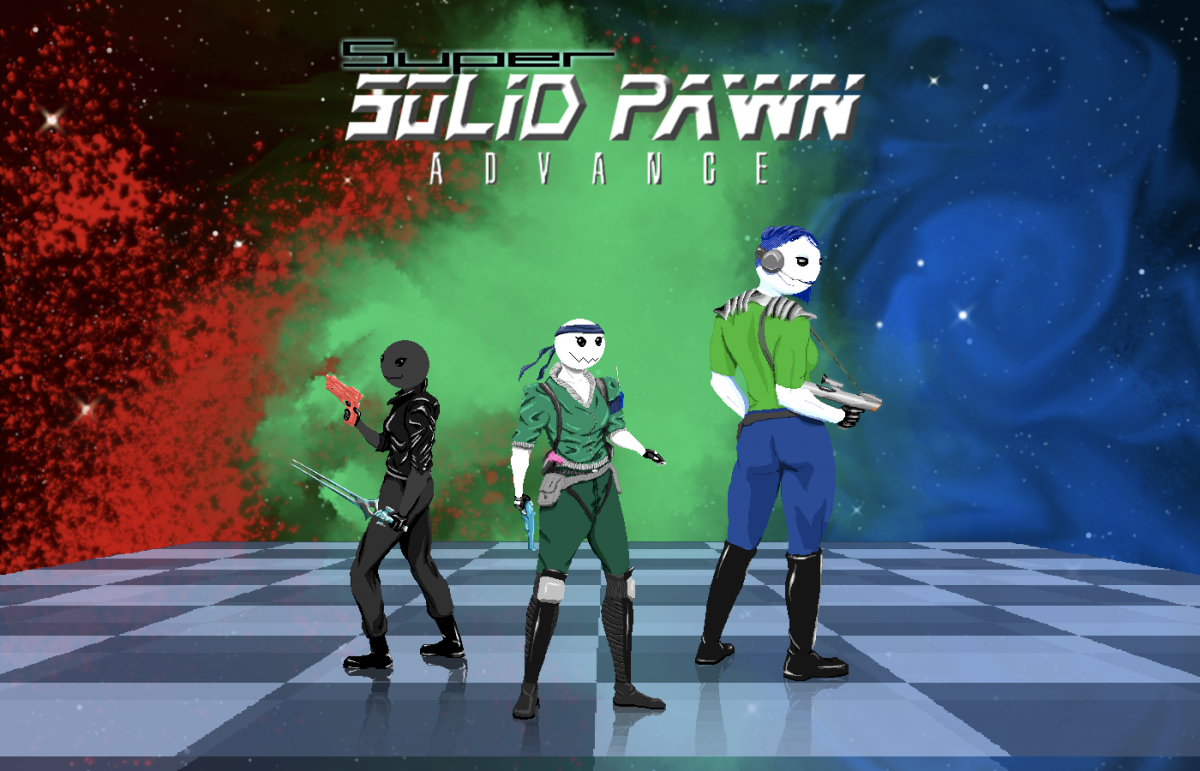This time we take a look at a third party light gun for the 16-bit era, the Konami Justifier. In the past, most peripherals for the 8-bit systems had little in the way of competition. Ideas like the Power Glove and LJN’s Rollin’ Rocker were major flops in their own right, so no one wanted to copy them, while others like the NES Power Pad had potential that was not fully realized until the home version of Dance Dance Revolution came around. On the whole though, most systems that had a light gun had just one designed in house. The NES had the Zapper, the Sega Master System had the Phaser, and later the Saturn had the Stunner. But when the Justifier came around things got a little complicated.
Nintendo and Sega already had their own light guns made for the SNES and the Genesis, the Super Scope and the Menacer respectively. Unfortunately, neither of these was very handy to work with. The Super Scope’s bazooka design is unwieldy and takes a load of battery power to run, while the Menacer, being made up of multiple connecting parts, is flimsy and imprecise. Neither of these were particularly comfortable to use, and when Konami was producing the home version of their arcade shooter Lethal Enforcers, they opted to package the game with their own light gun.
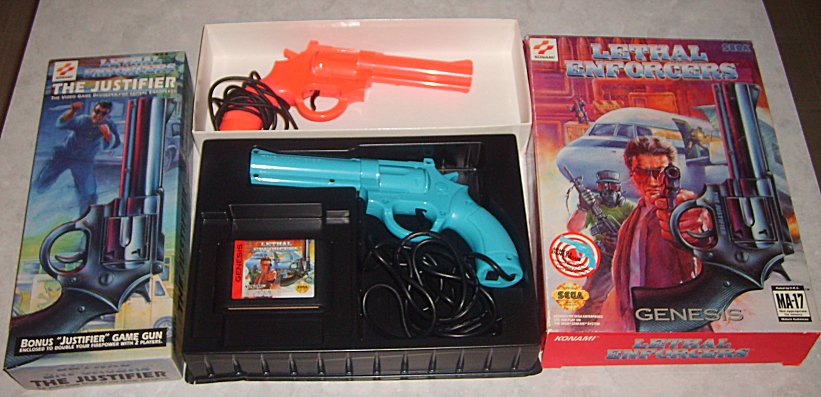
How It Works:
While the Justifier works on a similar principal to the Zapper, the mechanics are different. Just like Zapper the gun itself uses a light sensitive photo-diode to register whether the gun is hitting its target. The difference is that the Zapper would determine the hit on sequence marked targets, while the Justifier, and most light guns to follow, works by using cathode ray timing. This process uses the photo-diode in the gun to calculate the refresh rate of the scan lines of a CRT TV. The gun detects the change in the lines and signals the system to determine where the hit was registered. To get the alignment between the photo-diode and the scan lines, games that use this set up have to be calibrated before play.

By using this process the Justifier is incompatible with LCD, LED, and Projection TVs. Besides the function, the other big differences from previous light guns are the inclusion of a start button on the chassis, and the ability to work with a second light gun. To use NES Zapper you have to plug the gun into the second player controller port on the system. In most cases the gun cannot interface with the menu. The drawback is that you are unable to play with more than one player. For games like Freedom Force, although there is a two player mode, you must trade the gun between each other and play through the same level again. The Justifier on the other hand allows you to plug a second gun, not into the system, but into the base of the gun itself for co-op gameplay. Some Master System games like Gangster Town have co-op, but is was a rarity.
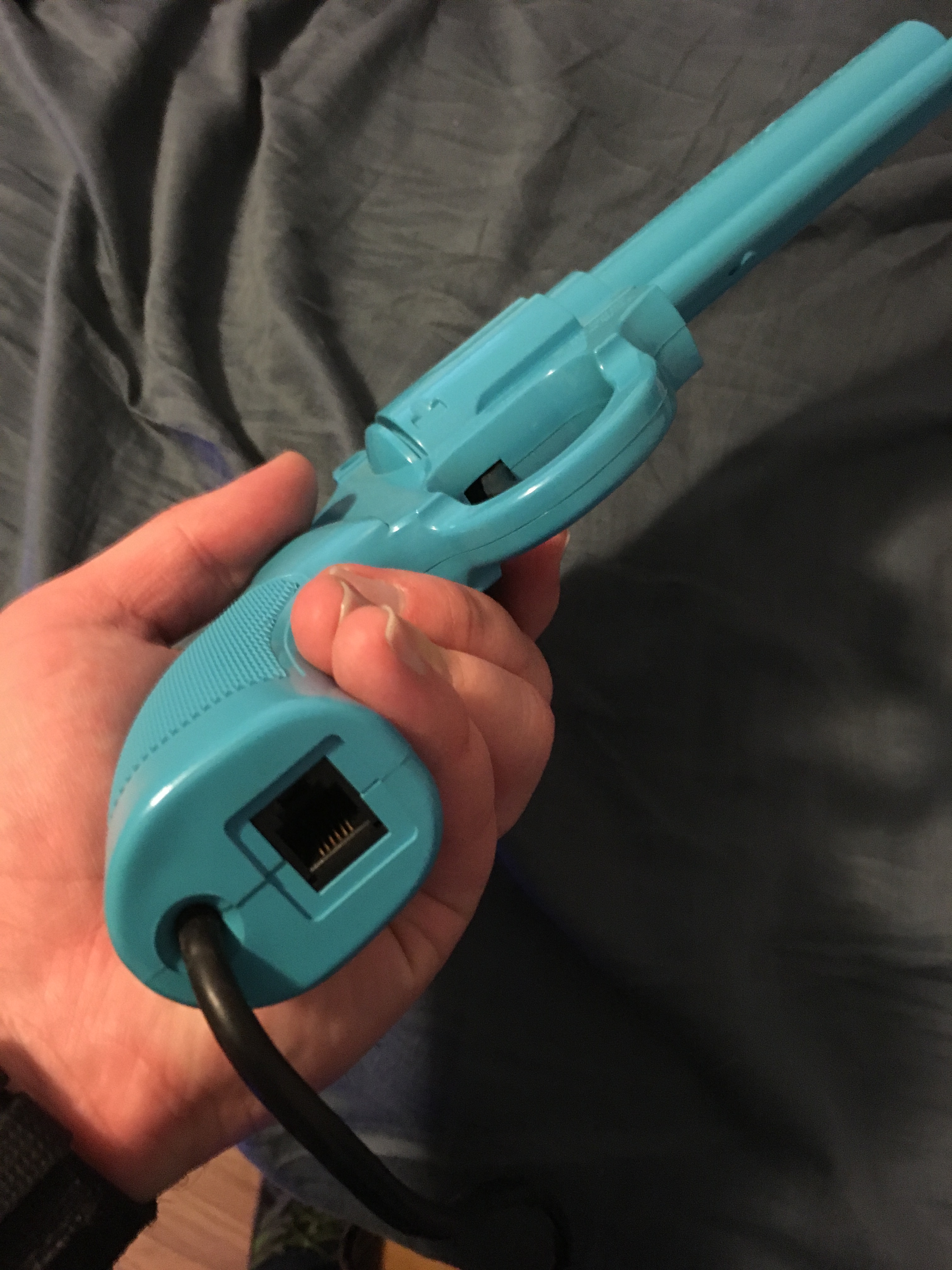
The second player Justifier is unique, in that it does not have a proprietary plug and can be used with any player one Justifier, regardless of what system it is for. However, to get the second player Justifer, you had to send in a mail order to Konami, making them much rarer than the single player gun.
Unfortunately, the biggest issue here is a question of compatibility. The Justifier could work with a few non-Konami games, but not all light gun games. You still needed a Menacer or Super Scope for their respective multi-pack games, and you cannot use either of these for Justifier games. The exceptions to this rule are the games produced by the American Laser Games company for the Sega CD which accept a number of guns, but you still cannot use the Justifier for games like Terminator 2: The Arcade Game or Corpse Killer on Sega systems. In addition, each Justifier has a proprietary input for each system. If you had a Genesis model, you could not use it for the Super Nintendo. But as much of an inconvenience as this was, there really weren’t that many light gun games for the SNES or Genesis. Compatibility was a larger problem for the PlayStation, because the PS1 Justifier was not compatible with games that used Namco’s GunCon and vice versa.
Older game systems that included light gun games, such as the Magnavox Odyssey, were made with a with a realistic design, usually black and brown plastic. However concerns over the impact of video games on youth violence lead to a shift away from realism. The Zapper and Phaser look like ray guns with garish colors and odd shapes, while the Super Scope and Menacer had designs that were not likely to be mistaken for the real deal. The justifier on the other hand is modeled after a Colt Python revolver just like the guns in the Lethal Enforcers arcade cabinet.

This design was a subject of controversy. During the 1993 congressional hearing on violence in video games, Senator Herbert Kohl of Wisconsin took umbrage with the gun, finding it inappropriate for children. This did not cause Konami to stop selling the Justifier, or alter its design in the early 90s. Eventually, there was a change with the PS1 Justifier having the more ray gun like design of previous light guns
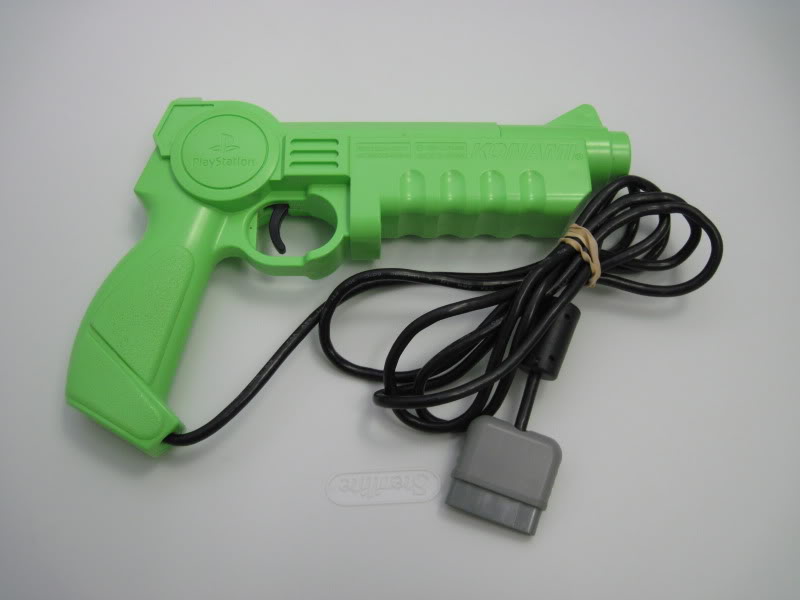
The Games:
Screen shots from Moby Games and Games4Win
Lethal Enforcers
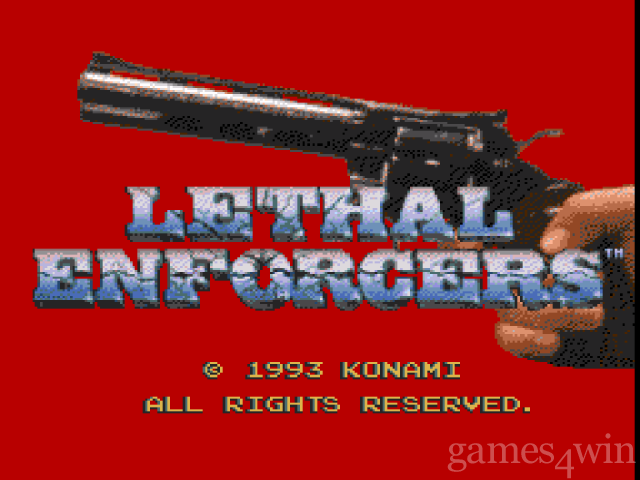
Lets start with the game the gun was made for, Konami’s Lethal Enforcers. You play as a new officer on the police force in a city experiencing the worst crime wave in decades. All through the district, organized criminals are launching attacks, robbing banks, smuggling drugs, and spreading mayhem. Now it’s up to you to take out the bad guys, rescue the hostages, and save the city.
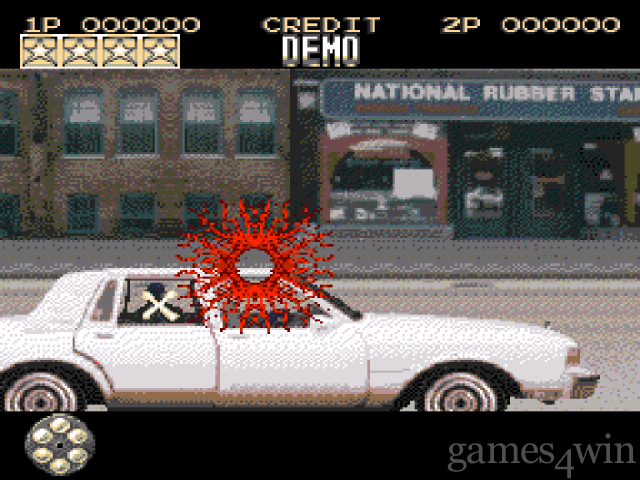
This is just the sort of shooting gallery that defines the light gun experience. Each stage has you arrive at the scene of a crime in progress. The criminals will pop out from cover to take a shot at you and you must be quick enough to hit them before that happens. In each stage there are special weapons that you can pick up for greater damage or area of effect. Twitch reflexes are not enough to win though. Caution is also necessary. Among the crowd of people to pop up there are civilians and hostages who will move from cover. Your fellow officers will also move into frame and hitting them is just as bad as a hostage. Each level is made up of a few scenes with different criminals or gimmicks. For example, in the first stage the last section is a car chase, where you must shoot out the bad guys in the car, but look out for their back up on motorcycles, and in the arcade version, civilian drivers.
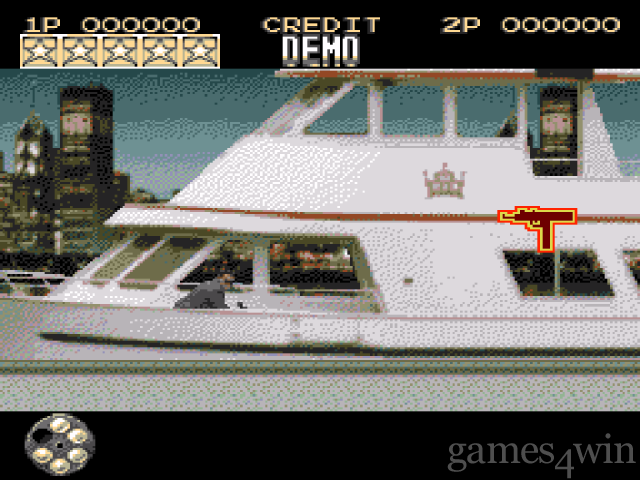
The game play is pretty fun and frantic, but it is also rather punishing. Some enemies get in crazy fast shots, and some bad guys pretend to be civilians. The punishment for killing a hostage is also very steep. Most rail shooter games will punish you for hurting a good guy. In Freedom Force, you were allowed a small number of mistakes before you lost. In Sega’s Virtua Cop, hitting a civilian takes away health. Here however, killing a single hostage or policeman will force you to replay the whole stage. This really saps the enthusiasm to go on, since starting over isn’t instantaneous. If you accidentally take one out at the very start of the mission, you’ll have to play the whole level through before being told to do it again.
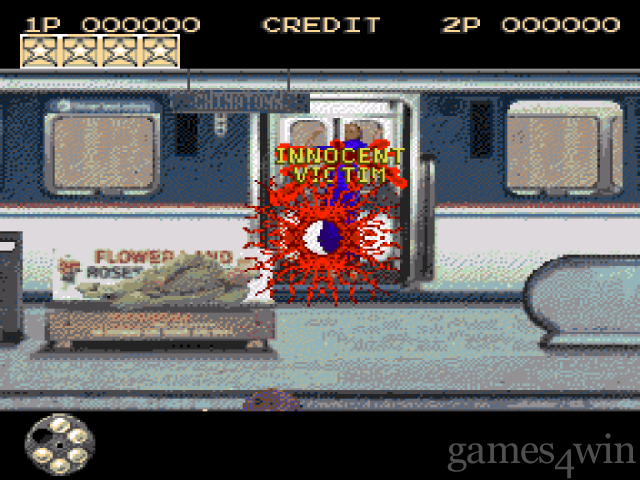
Although the game has a pretty good number of levels, the requirements you have to fulfill to see them are rather harsh. As mentioned before hitting a civilian hurts you badly, but the only way to get to another level is the rank system. At the end of a level your score is tallied and your rank in the police force is shown. If you meet the accuracy qualification you are promoted. If you don’t you stay at the same rank and have to replay the level. What is more, you are demoted for every civilian or fellow officer hit. The problem here is that once you’ve been demoted you have to replay the same level over and over until you get the correct rank.
For example, if you play through level 2, meaning you have a detective rank, and you make your accuracy mark, but kill two people, then you’ll be promoted to sergeant for your accuracy, but bumped back down a rank for every bystander hit back to patrolman. So you replay the level, but once you’ve gotten through without any mistakes, and get promoted back to detective, you will still have to play the same level again to get up to sergeant to play another level. Considering that even one misstep requires you to play again, having to play over and over again after a bad run in the later levels is just not fair.

Presentation is pretty fair. Rather than the console version using custom pixel art, it compresses the graphics from the arcade game. I’m sure for the time the digitized characters were impressive, but they have not aged well with time. The arcade had the clearest picture and audio, with a large variety of characters.
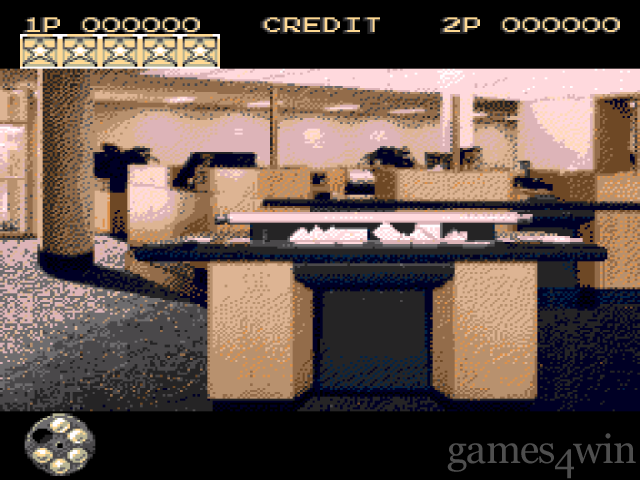
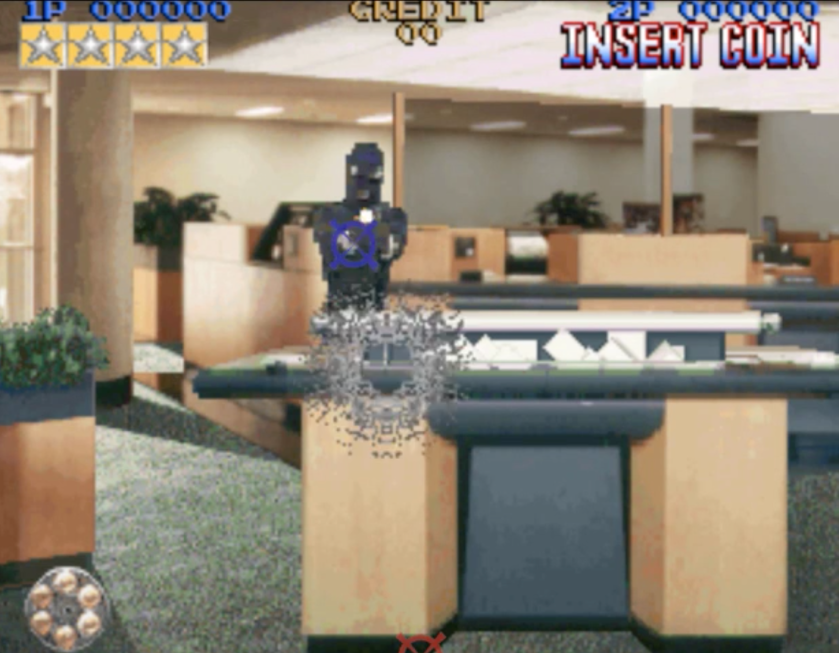
The overall package was cut down a peg for the home consoles. The Genesis version seems to suffer the most. There is less detail and animation in the graphics and the music is less enjoyable. Some of these setbacks are carried over to the Sega CD version, but to a lesser degree. The music is almost arcade perfect and there is more animation in the characters, but the graphics are pretty muddy. The Super Nintendo version has the best visuals. More detail and a little more color. There are even some environmental effects from the arcade game that were not in the Sega ports, such as breakable glass and windows.
This game was highlighted in the ’93 congressional hearings. Senator Kohl described Lethal Enforcers as teaching kids, “…that a gun can solve any problem”, and that when an innocent bystander dies that “…bystanders need to get out of the way”. He said the game, “…turns any effort to discourage youth violence on its head”.
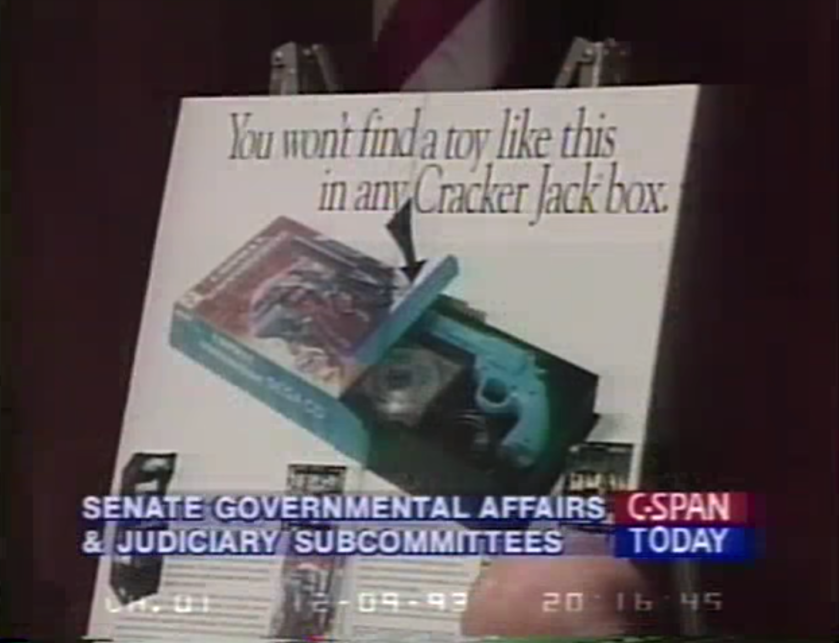
Much of the hearing is focused on misrepresentation and exaggeration of the content of the games highlighted, such as the cheesy antics in Night Trap being called an endorsement of sexual violence against women, and the characterization of Lethal Enforcers is no different. A game about police stopping crime that punishes you harshly for your innocent death is dangerous for kids when cap guns and other toys have been on the market for decades.
This game isn’t a good hill to die on, but the absurdity of it all is worth looking at, considering the type of stuff we have now.
Lethal Enforcers II: Gun Fighters
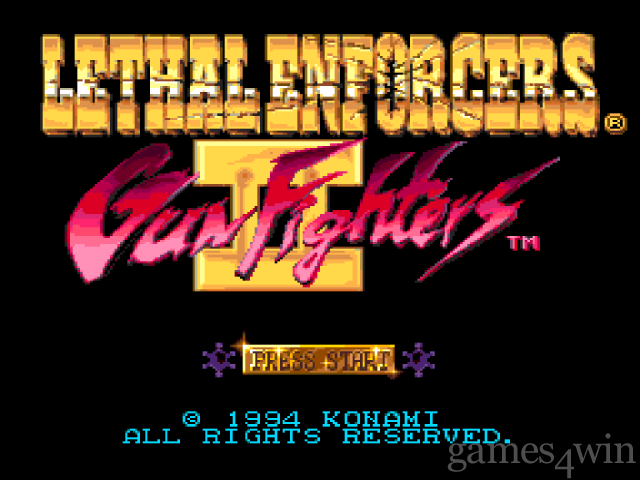
The second Lethal Enforcers goes back to the lawless days of the Wild West. A gang of bandits has just ridden into town, and as the Sheriff, its up to you to drive these criminals out of your quiet home and save the locals.
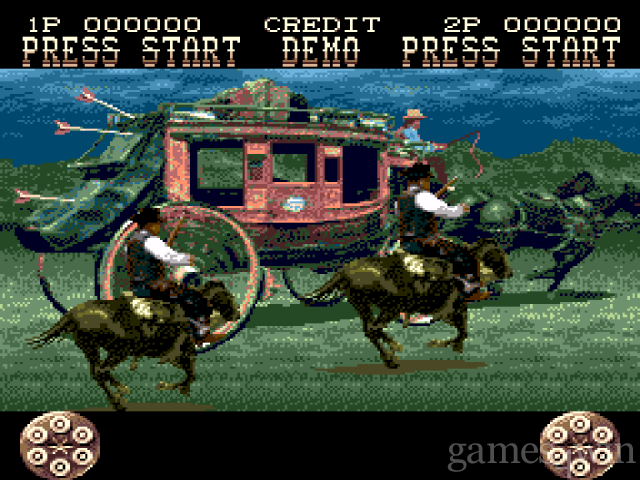
Gameplay wise, Gun Fighters is almost identical to the last game, but there are a good number of changes. Like before, the game is a shooting gallery, with bandits popping into frame to take pot shots or throw knives at you. There is only a limited amount of time to take out the bad guys, and periodically innocent bystanders pop up that you must avoid hitting. In LE1, the bad guys would pop up, roll into the scene, creep up in the foreground, and even take a hostage. While the bad guys in LE2 do the same, there are a few other tactics used against you. Some new enemies run across the screen to shoot, take more than one hit to kill, or pop in from more creative locations. You really have to keep on your toes this time. Enemies can swarm you very quickly and if your not careful, you may hit a local.
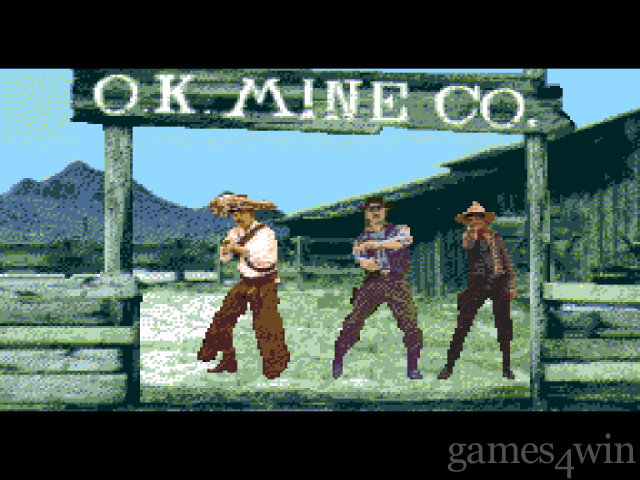
Last time, hitting a civilian essentially ended the game. Do it even once and you’ll have to replay the same level until it bores you. This time though, hitting a local takes away some health without requiring you to try again. In fact, the whole ranking system has been overhauled. Now you are judged by the end of every stage, but even if you’re a terrible shot and you massacre the whole town, you’ll just get a bad score and move on.
Presentation has taken a leap foreword. Although the Sega versions still look pretty crummy, the overall improvements make up for it. Each level has some interactivity with the background. Some details are small, but entertaining, like shooting the piano in the saloon causes it to play a note. Other tricks are more interesting like shooting the floor out from under an enemy to make them fall. Shooting out vases and bottles will also reveal more weapons to use like dual wielding six shooters, a repeater rifle, or even a Gatling gun
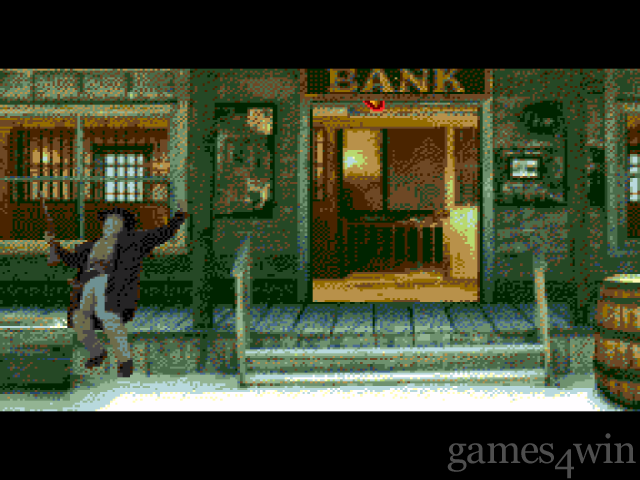
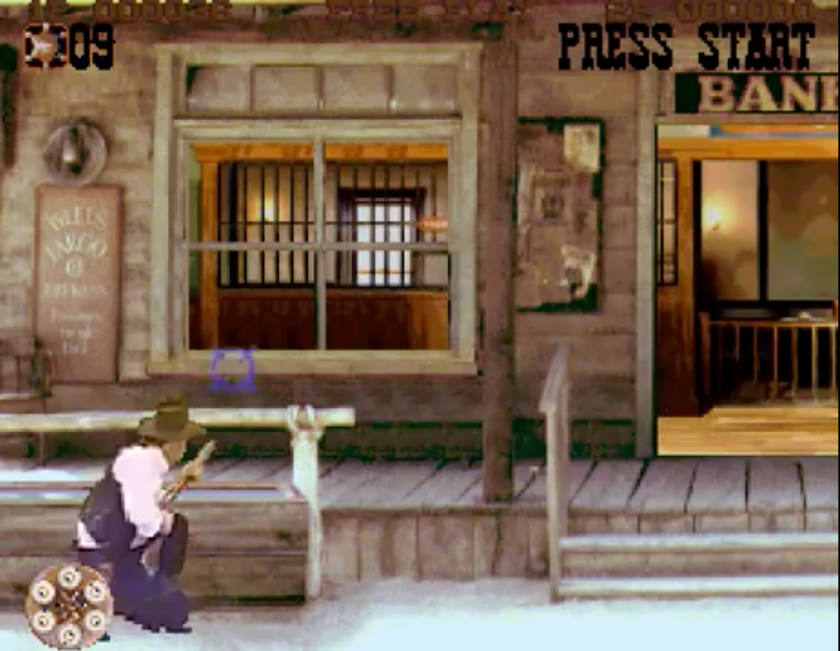
The Sega CD port has more animation and sounds closer to the arcade game, but despite the graphical downgrade, the levels on all versions are more interesting. There are more scenes in each stage, and some stages are built around interesting set pieces like a train robbery or an attack on a horse drawn coach.
This time almost every character spouts some line when they pop up. While the lack of variety and repetition can be a little annoying, it also keeps you guessing and lets you know when an enemy shows up or an innocent bystander. Along with more weapons, and more engaging bosses, Lethal Enforcers II is a huge improvement over the first game.
Snatcher
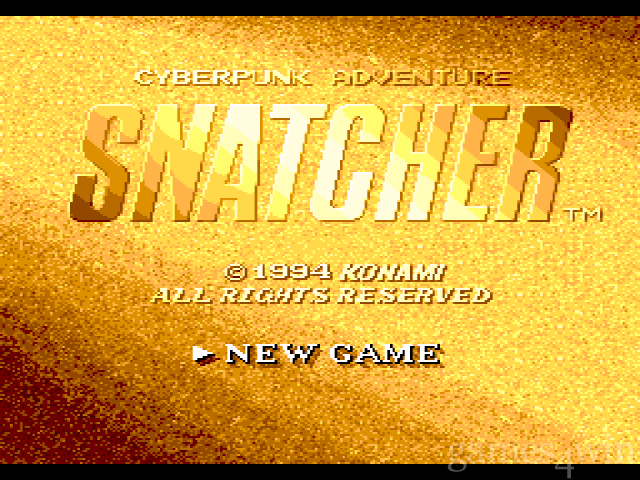
To be perfectly honest the Justifier isn’t a large part of this game and it’s such an interesting title, I’ll save major discussion for a proper review. Yet, gunplay is here and there weren’t that many old school Justifier games, so here we are.
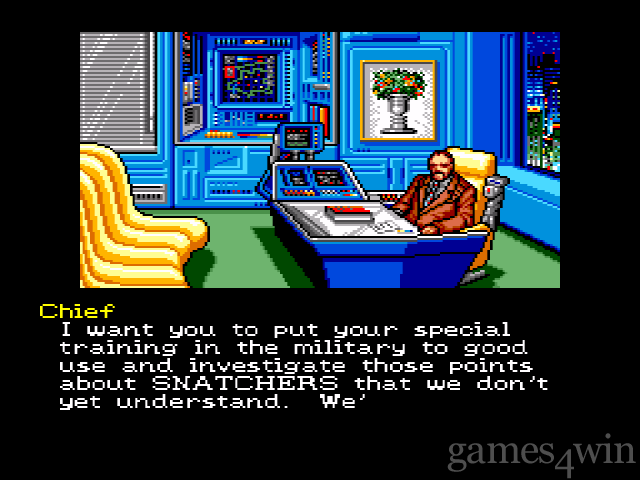
Snatcher was a project helmed by renown gaming auteur Hideo Kojima after making the original Metal Gear on MSX. It is an adventure game with his very cinematic direction and verbose dialogue. The story concerns a police detective in the future hunting down body swapping creatures called Snatchers. While most of the game is investigation and inventory object puzzles, there are several points where you’ll be in gunfights with the Snatchers and when that happens you can whip out the Justifier and have a more engaging fight.
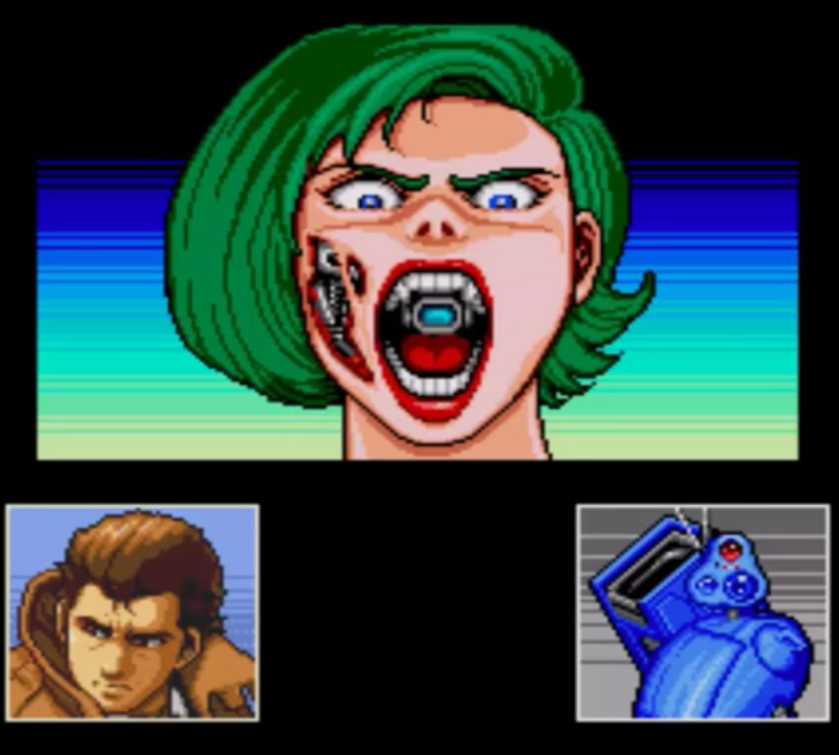
In theory this would be a great way to mix up gameplay, and when it works, it’s fun. The key phrase being “when it works”. If you don’t have the gun, these fights are a grid based shootout. You move a courser across a three by three square and hit the field with the enemy in it. The Justifier gameplay mimics this in that when you draw your weapon the grid pops up and you shoot the grid point with the enemy.

Part of the trouble is that the gun is not always 100% accurate, even with perfect calibration. A shot may be off by a small margin in any direction. However on a functioning gun, even this is hardly a problem with other Justifier games like Lethal Enforcers. Later guns like the Sega Stunner and Namco GunCon have this problem as well, but more throughly ironed out.
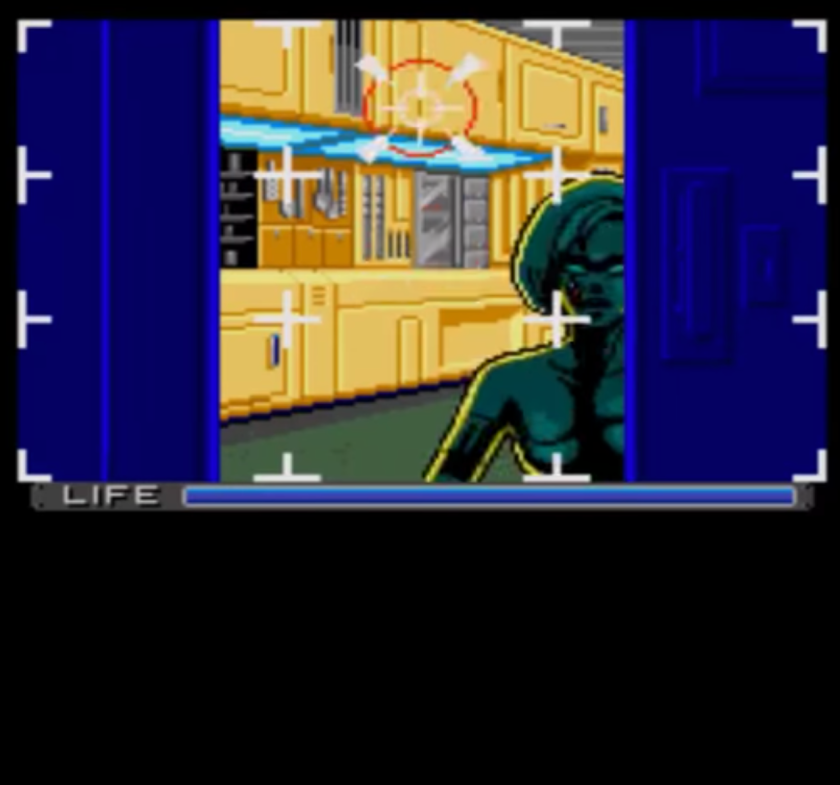
In Snatcher though, you don’t have free aiming. Even with the gun, you’re hitting one of nine targets, and if your shot is on the line between targets, the system seems to just pick one of the two. With the Lethal Enforcers games, your aiming is free, and as long as you hit anywhere on the target, it counts as a proper shot. Although there were times when I could get the set up to work perfectly, more often than not the aiming seemed to never go where I wanted it to. Sometimes the shots are wildly inaccurate, and at others, shooting at the same spot would register a hit in different fields.
While the idea was interesting, it was not implemented well. If it were a larger part of the game, as would be the case with Kojima’s Policenauts, it might have had a greater impact, but for this game, you’re better off with the controller.
Mad Dog McCree
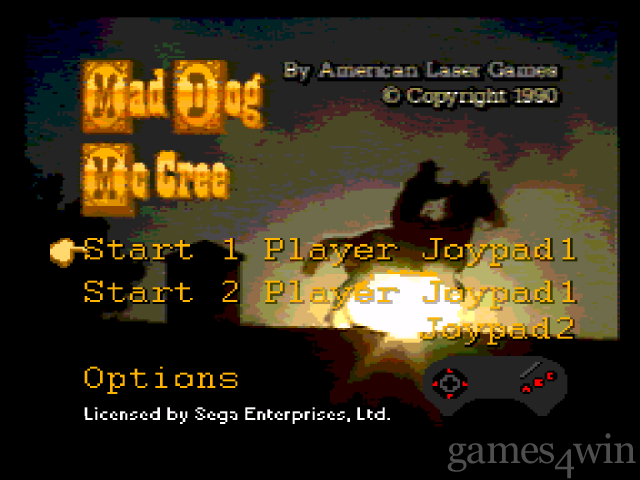
American Laser Games was a company that risked itself on bleeding edge technology. Their main attraction was laser disc arcade games. These could hold a lot of content at the time and the novelty of seeing what amounts to a movie in the arcade was an impressive feat. However, laser disc cabinets were hard to maintain, and the disc readers would wear out pretty rapidly. But games like Dragon’s Lair in the 80s were a massive draw for arcades and ALG applied the tech in the 90s to rather decent success.
Most of their titles were also released on CD based home consoles like the PC, 3DO, and Sega CD. They produced their own light gun as well, called a Game Gun, but the titles on Sega were compatible with the Justifier.
Their first major light gun game, Mad Dog McCree saw a good deal of positive reception at the time. You play as a drifter wandering into an old west town. Soon the people appeal to you to save them from a gang of bandits lead by the evil Mad Dog McCree. You must fight through his men until you can confront him yourself.
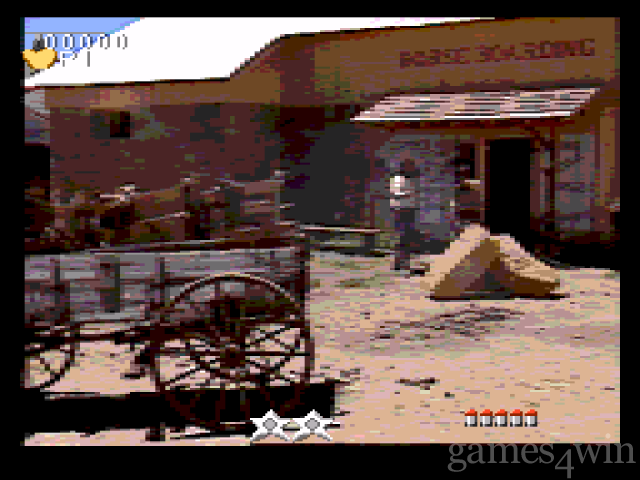
Mad Dog plays like an interactive movie. A series of pre-shot clips play and when a gunman aims for you, you shoot before he can. Depending on what happens the game continues or you lose. You only get one hit before it’s lights out, and hitting innocent people also counts as failure. At certain points you’ll have a stand off with a single opponent.
This title is an interesting relic. However responsive the arcade or re-released updates may be, the initial home release has some real problems. The Sega version is heavily compressed to fit on the disc, so much so that some enemies are highlighted with a small icon because of how hard they are to see. There is even one instance where the compression is so bad, you are expected to look in the manual for a higher resolution image to follow. Every time you make a shot, the system has to load a new spot on the disc, these load times inadvertently give you a small advantage, a chance to gather your wits for the next attack.
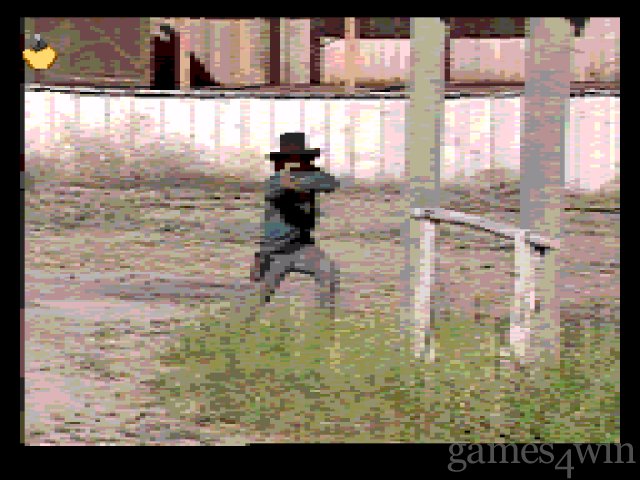
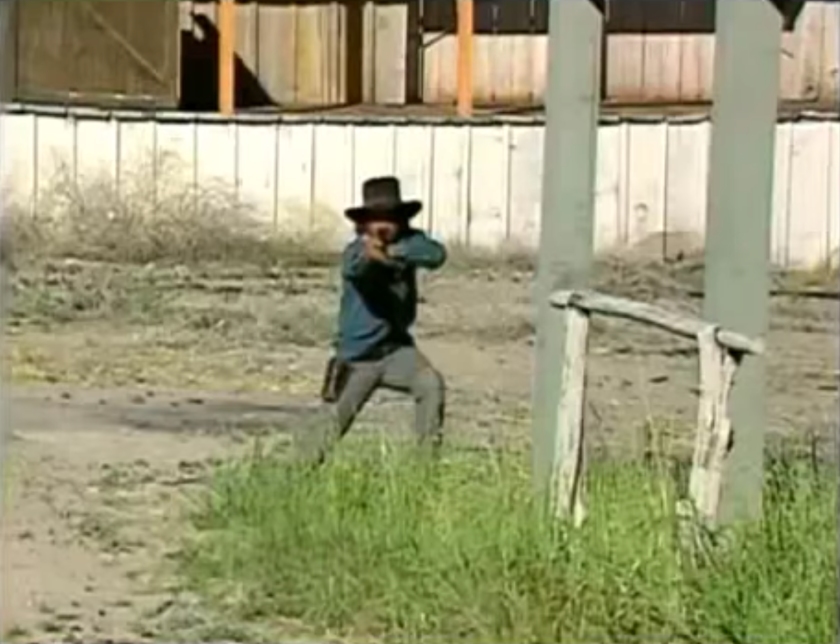
The home versions of the stand offs are a little wonky. In the arcade you had to quick draw. The game would know if you were pointing the gun at the screen, but the console games weren’t that sophisticated. Instead you’re gun is unloaded until the draw. You have to not only hit the guy but reload before you can take the shot. This adds mere moments before you can shoot, so you’ll have to be even quicker on the draw.
The acting is like that of a low tier PBS kids show, and when you know what you’re doing the game is barely fifteen minutes long. There are goofy and over the top performances all throughout, but for some that may be endearing. It’s an interesting title from the early full motion video era, and if nothing else, it will help justify owning the justifier.
Who Shot Johnny Rock?
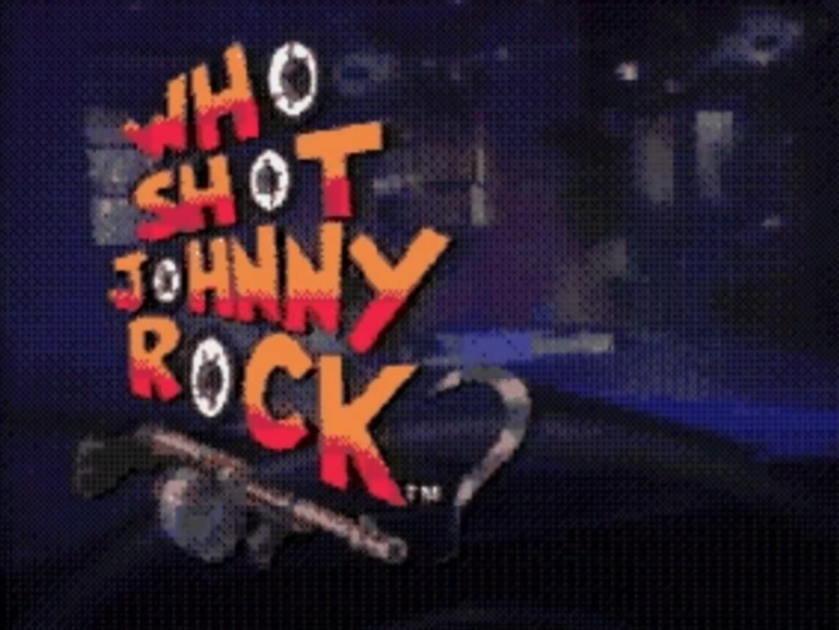
The next ALG title, Johnny Rock is a noir parody game. You play as a private detective hired by a young woman to uncover the murderer of her friend Johnny Rock. As the film plays out the mystery you must take out hit men and gangsters trying to stop you. Apart from the story and setting, the game is almost the same as Mad Dog McCree. The video plays and you have to shoot the attackers before they kill you or any innocent bystanders.
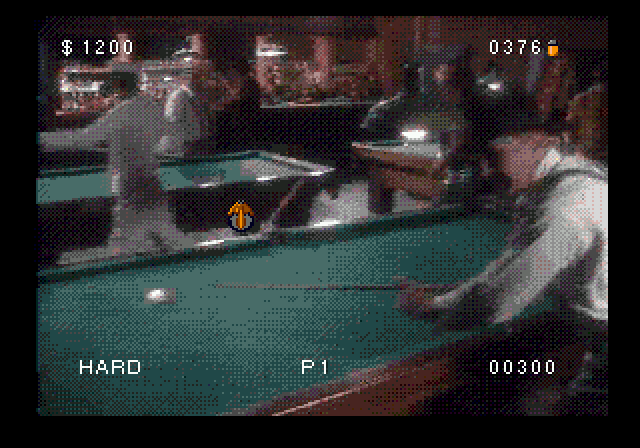
While Mad Dog was a pretty straightforward in its gameplay, Johnny Rock has more to do than just shoot the bad guys. Rather than having a number of lives you have a fund of money that you use to buy ammo (you don’t have to reload, but you need to buy ammo) and pay off medical expenses. When you get shot you are treated by a doctor and a chunk of your funds is taken away. You also pay funeral expenses for innocent people you mistakenly kill. When you’ve got no more money it’s all over.

The presentation suffers the same problems on Sega CD as well; heavy compression, load times, and stingy timing.
Mad Dog II: The Lost Gold
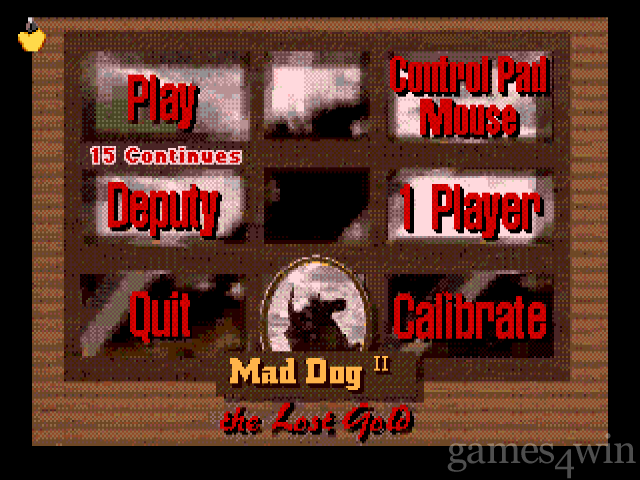
I suppose the early light gun days were just stuck in the old west. Sadly none of them give you the satisfaction of Jim West taking on Dr. Loveless and his goons.
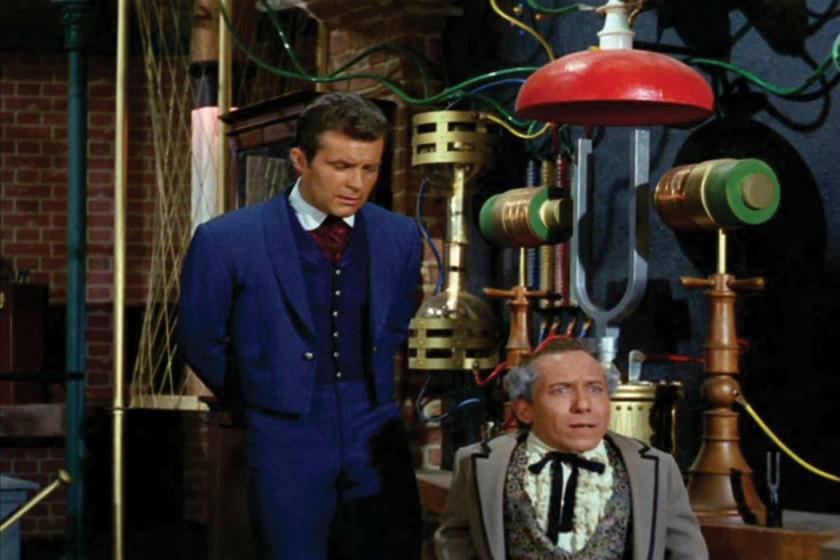
Once again we return to face off with Mad Dog. After you stop his rampage, he escapes on horseback. Now you must pursue him and as an extra challenge, search for the stolen loot hidden in Mad Dog’s hide out. While the last game allowed a sort of choose your own adventure style, allowing you to pick the order of the stages, this time around you have a selecting of three different guides to take you through the wilderness to find Mad Dog’s hideout, each with their own unique stages.
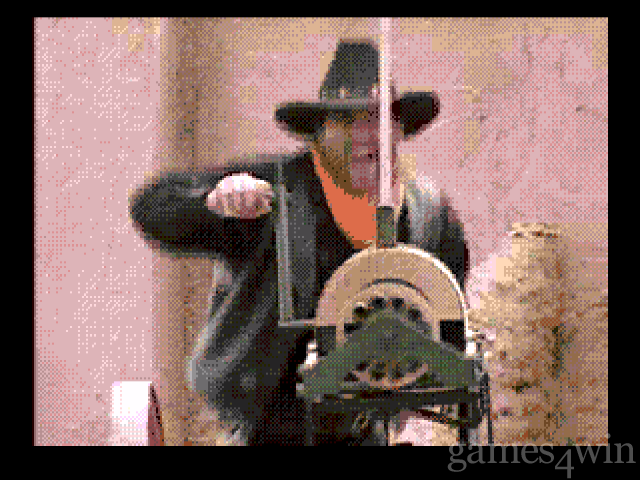
This game made the rounds to the same systems, but the Sega CD version suffered the most. More visual compression and finicky gameplay. At a certain point there is little to say about the home console quality of these titles. The technology simply wan’t advanced enough to support high quality video at home. There is pretty good verity in the levels, but the same visual issues and timing problems bog the action down. Fortunately you can continue as much as you please.

Crime Patrol
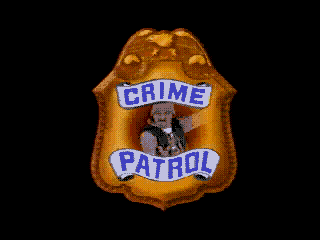
Another round with ALG, this time in a contemporary crime story. Crime Patrol puts you in the role of a rookie police officer. Each stage is a different encounter with criminals through your career. as the game goes on you are promoted to higher positions, ultimately landing with an anti-terrorism organization, stopping the theft of plutonium from a government facility. The different levels offer verity, but you don’t stay in one field too long at a time.

Gameplay is more like Mad Dog McCree than Johnny Rock. You have a few hits before game over, then you can try again from an earlier point. Playing on the Sega CD is another problem case. Bad compression, strict timing, and awkward loading. You might think that after so many titles in this format they would have improved the acting, but as usual its hokey and hard to take seriously.
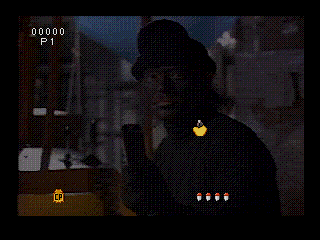
This was the last ALG game released for the Sega CD, and the last Justifier game for Sega. Their other titles, Space Pirates and Crime Patrol 2: Drug Wars, arrived on PC, 3DO, and the Philips CD-i, while titles like The Last Bounty Hunter and Fast Draw Showdown eventually came to the PlayStation 3 and Nintendo Wii.
Conclusion:
The mechanical aspects of the Konami Justifier mark a great improvment in home gaming hardware. Although Light Gun games have always only been a small part of a game console’s library, the more responsive and accurate performance of the Justifier was a model for later home Light Guns to follow, leading to several fantastic games in the Fifth console generation. The games are a bit of a mixed bag. The simplistic and iconic graphics of the NES have aged far better than the Sega CD’s video compression or the digitized visuals of Lethal Enforcers.
The controversy of the gun’s design and the role it played in the ’93 congressional hearings are pretty humorous considering the material in question. Shooting games go back to the 70s, and a baby blue plastic toy would be as likely, if not less so, to turn a child to violence as a cap gun or air rifle. Considering how we are still having the “Violent video games lead to actual violence” argument to this day, I don’t suppose the end of the light gun era popped up on the radar of those championing this position. Looking back on it though, we’ll always have some fun games and a bit of a laugh at what was considered corruption of the young back then.
